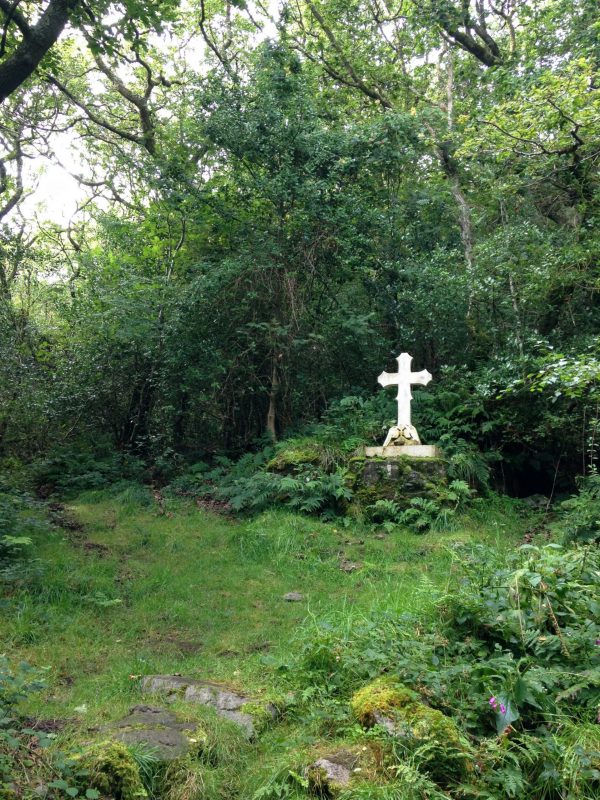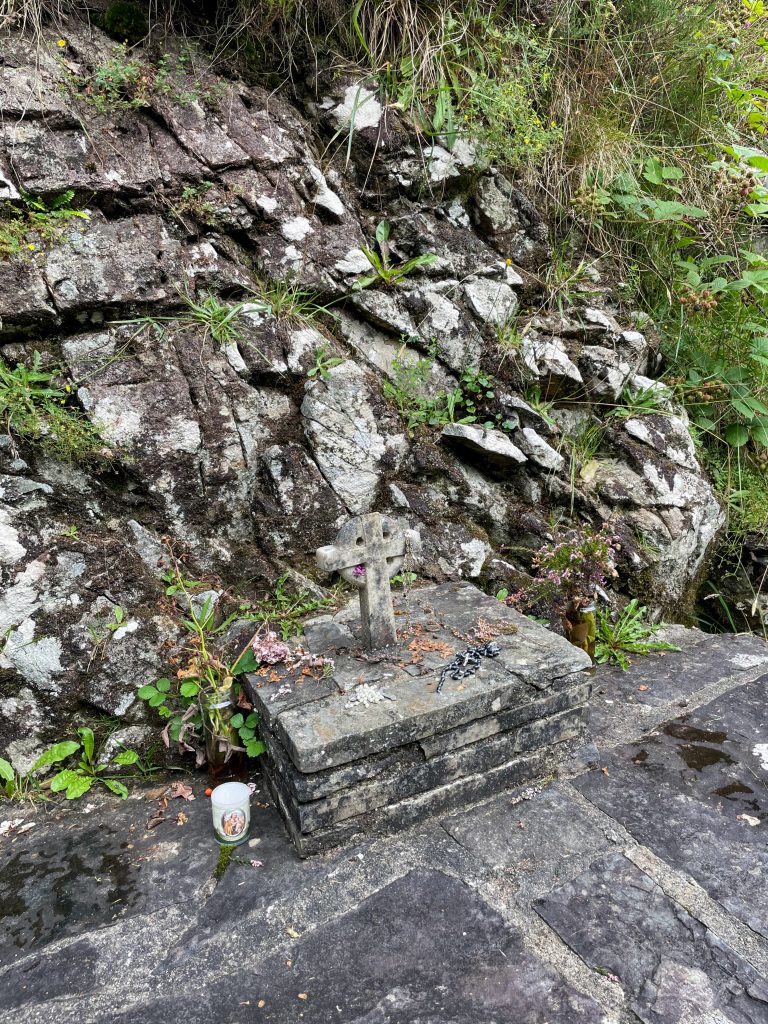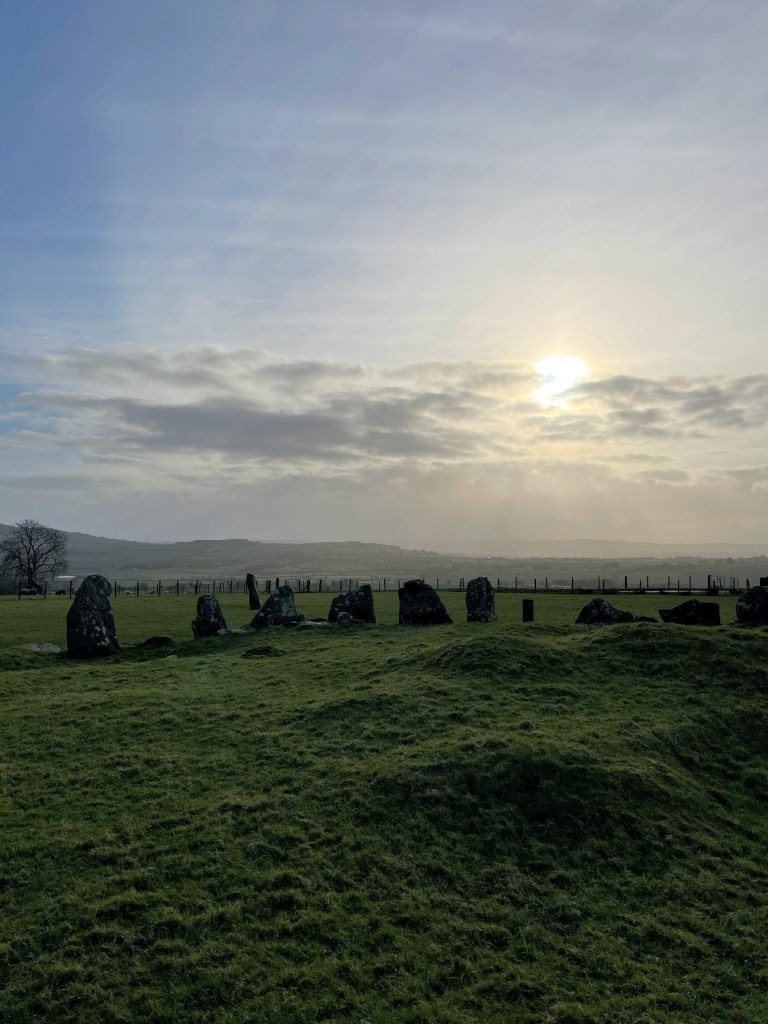There are some words in life I never dreamt I’d hear. On 13th March 2020, I heard them:-
“Masses are cancelled.”
Masses across the Republic of Ireland were cancelled.
In the North of Ireland on 23rd March 2020. I heard these words:-
“All places of worship are to close to the public.”
Coronavirus was altering every thread of the fabric of society as we once knew it.
Priests will still say mass but no one will be there to hear them.
Although I am no longer a believer, the idea of a priest offering a solitary communion in an empty chapel touched me.
It got me thinking about Mass Rocks in Ireland and the meaning they would have had for my ancestors.

A Mass Rock (Carraig an Airfinn) was a rock used as an altar in mid 17th century Ireland as a location for Roman Catholic masses.
For almost 60 years, during the times of the Penal Laws (1695-1750), observing mass was illegal; churches were closed and many priests were forced to leave the country.
Priest-hunters roamed the countryside looking for any unregistered priests so they could get a bounty or reward offered under the harsh, restrictive and oppressive laws of Oliver Cromwell.
Priests continued to celebrate mass in secret, outdoor locations.
Priest hunters were also employed to arrest Presbyterian preachers under an Act of 1709.
Similar stones, known as Mass stones, are found in Scotland.
Presbyterians held ‘Conventicles’ and these were also outlawed, even though they were not religious ceremonies.
The Mass Rocks were landmarks for the local community to congregate to participate in mass in hard to find places, hidden away from the prying eyes of the authorities.
“Oft hath the holy wine and bread
Been blest beneath thy murmuring tent,
Where many a bright and hoary head
Bowed at that awful sacrament;
Now all beneath the turf are lai,
Who here had sat, and sang, and pray’d”.
Many Mass Rocks in Ireland were to be found in woodland settings, off the beaten track, in the search for safety from Crown Forces and the elements.
Observing Mass was dangerous and difficult; harsh penalties would be imposed for anyone caught attending or for anyone who was thought to be harbouring a priest.
The times and locations of the Masses were shared word of mouth.
The priest would carry an altar stone from place to place and lay the altar stone on the designated Mass Rock to prepare the sacrament of Holy Communion.
Sometimes, local families would take turns to hide the altar stone between masses. It took incredible courage and bravery as they may have been put to death had they been found out.

Currently, there are about 400 Mass Rocks recorded, but it is thought there are many more.
Other names associated with sites where Mass was celebrated in Penal Times include:-
Faill an Aifrinn meaning ‘Mass cliff’.
Gleann an Aifrinn meaning ‘Mass glen’.
Cnocán na hAltórach meaning ‘small hill of the altar’.
Páirc an Séipéil meaning ‘chapel field’.
Clais an Aifrinn meaning ‘Mass ravine’.
Dr Hilary Bishop of www.findamassrock. com says —
“So pervasive was the Mass Rock in the image of past persecution that Pope John Paul II spoke of it during his 1979 visit to Ireland. Mass continues to be said at a number of Mass Rocks today.”
Many people still go to visit their local Mass Rock on the May Day celebrations in Honour of Our Lady and decorate the Mass Rock with garlands of wildflowers.
The thought evokes memories from my childhood as we sang;
Bring flowers of the rarest,
bring blossoms of the fairest,
from garden and woodland,
and hillside and dale.
Our full hearts are swelling,
our glad voices telling,
the praise of the loveliest
flower of the vale.
My ancestors were a humble people. My grandfather doffed his cap to the local priest. They were much more innocent. Not necessarily a good thing, but more innocent nevertheless.
And, way back through many pages of family history, my ancestors travelled to their Mass Rocks — walked barefoot and in fear, to follow their faith.
I am now comforted and inspired by their courage.
This too shall pass, a chairde — this too shall pass.

Dá fhaid é an lá tiocfaidh an tráthnóna — no matter how long the day, the evening will come.
My poem ‘Communion’ is included in the Seamus Heaney Award for New Writing Anthology 2021 ‘Heartland’ compiled by the Community Arts Partnership.
Communion
Places of worship stand bereft;
naked without the clothing
of their congregations.
Cathedrals, churches, chapels, temples,
meeting-houses, masjids and mosques
are all empty.
Lone priests say mass;
offering a solitary communion
to hymns of whispering dust.
In Ireland, the chapels have been empty before;
pilgrim paths overgrown
without the feet of the faithful to tend them;
and the dead buried without custom.
And the rocks are still standing.
The wildflowers are still blooming.
The ocean still crashes at the feet of Sliabh Liag
and its waves continue to make
sacred communion with our shores.
Beir bua agus beannacht,
Rosaline